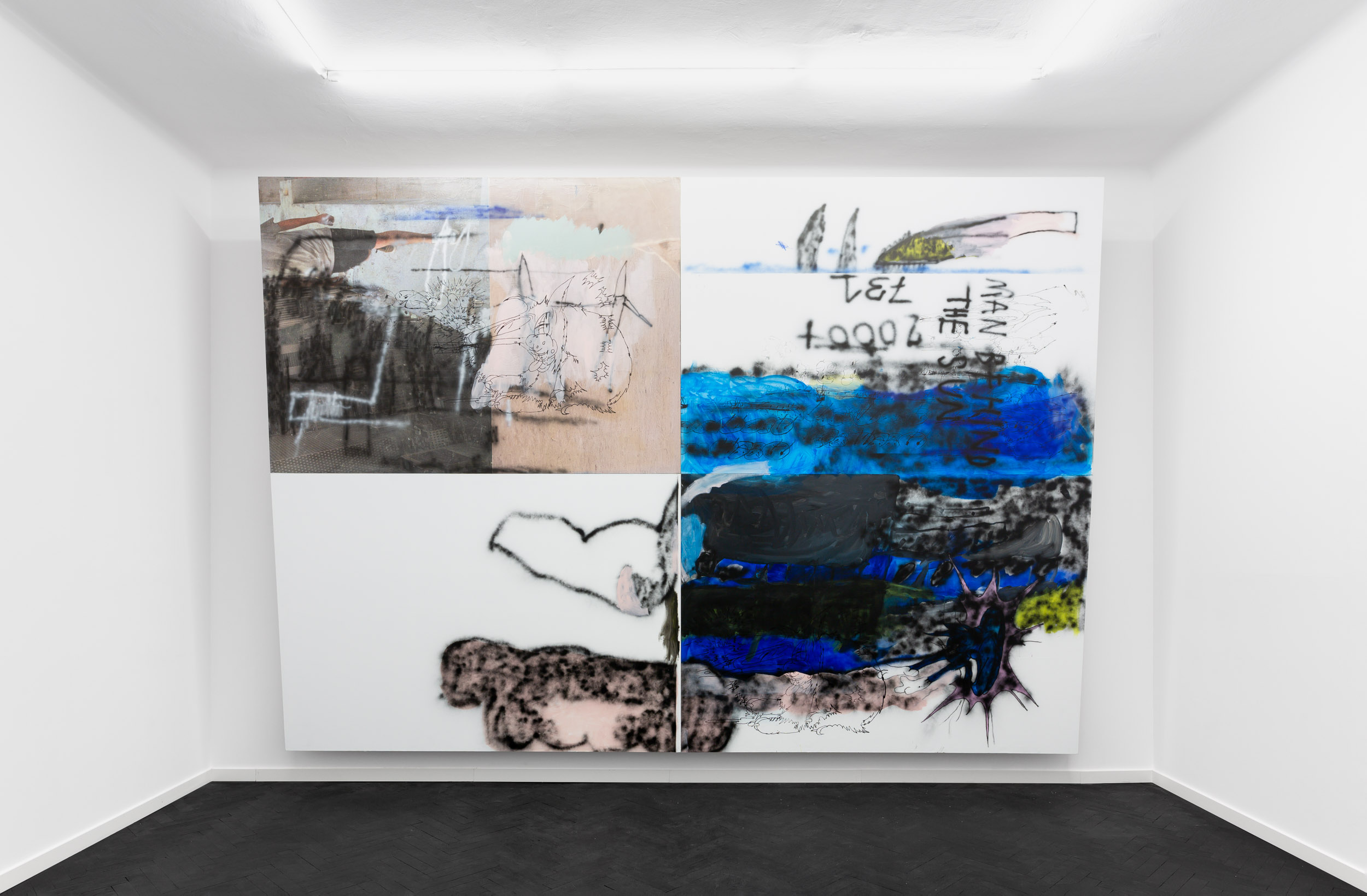
‘Do I have to kill myself to create anything?’, asked Daffy Duck and shot himself in the head. First, he shot himself, then he got up, shook it off, and moved on. In fairy tales and stories, violence has no consequence. In real life things sometimes turn out differently, but not always. In his most recent works, Jakub Gliński returns to the themes of violence, aggression, and cruelty, and for the first time, reaches into history for inspiration, revealing and effectively obscuring these complexly intertwined layers.
In one painting we see the number ‘731’ inscribed. Referring to Manshu Detachment 731, a Japanese military unit which during WW2 tested the effects of chemical weapons on prisoners of war, and implemented systematic extermination of the Chinese population by means of biological warfare. One example was the spreading of poisoned grain, which first affected rodents, then domestic animals, and eventually, humans. People were exposed to diseases like the plague and subjected to experiments with typhoid vaccines and infected with gangrene. The descriptions are dangerously close to the experiments performed in the medical barracks of Auschwitz. Despite the cruelty of the biological experiments of Unit 731, some scientists escaped punishment. When the Americans entered Japan, immunity was provided in exchange for the research. The promise of knowledge proved more important than justice for the human lives that were sacrificed.
For Gliński, the story of Unit 731 is but a metaphor for the endless barrage of cruelty for which humanity has invented further pretexts. As Lech M. Nijakowski writes in his book Ludobójstwo. Historia i socjologia ludzkiej destrukcyjności [Genocide. The History and Sociology of Human Destructiveness] – ‘the organised cruelty of homo sapiens usually takes the form of a political project’. The Crusades, the Massacre at Béziers, the Thirty Years’ War, the slave trade – each of these occurrences was motivated by a grand political vision. Gliński, who has thus far explored his own experiences – personal stories, testing his relationship with the world – reveals something new to us. The escalation of the Russian war in Ukraine has influenced how all stories about war have transformed from past to present tense.

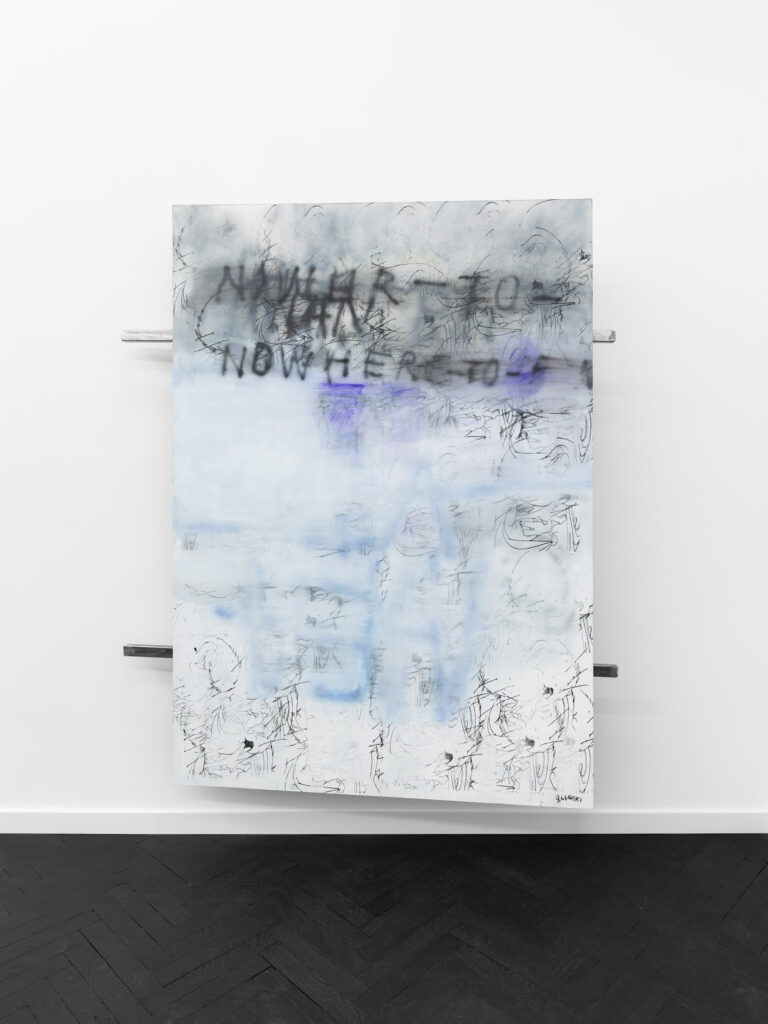


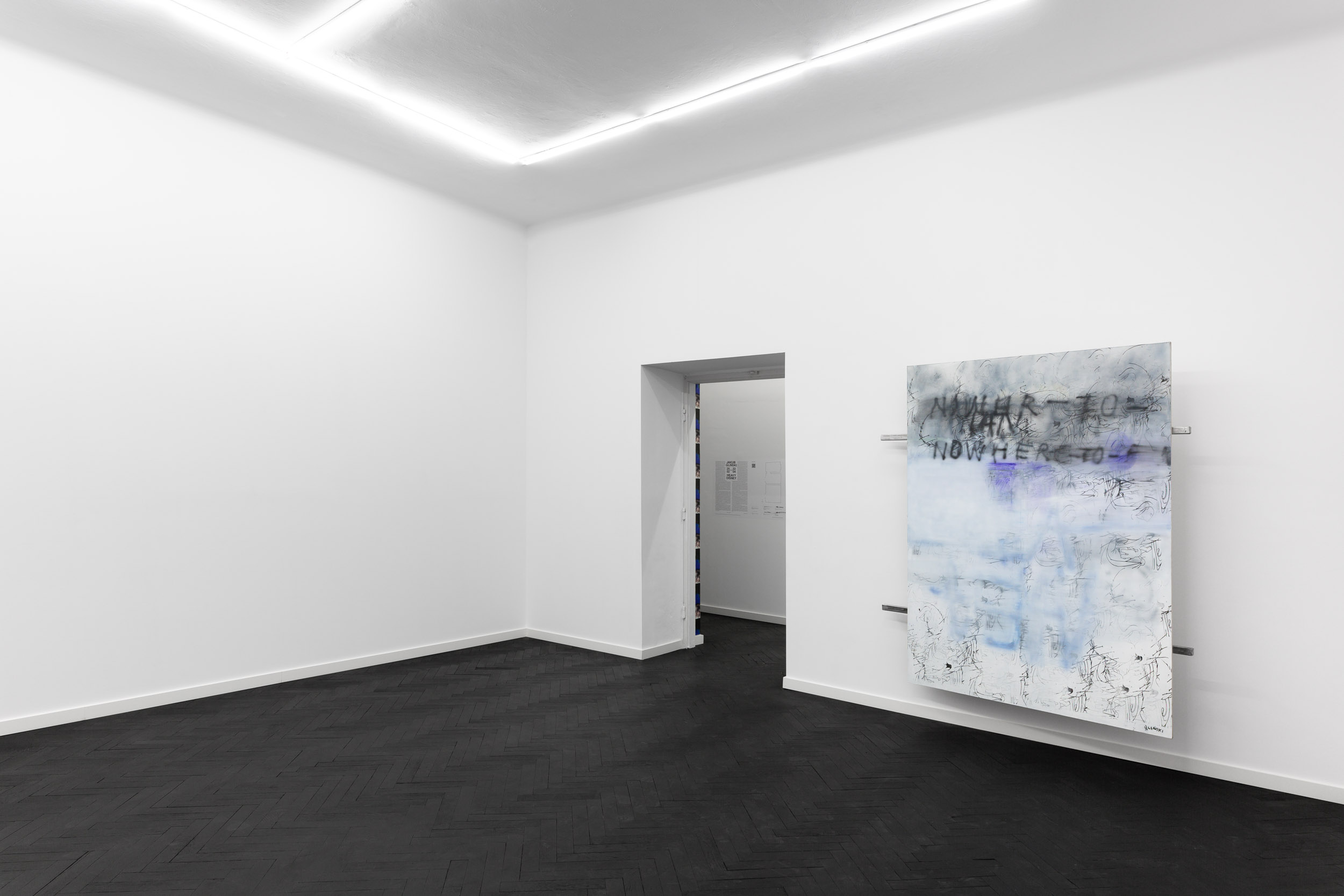

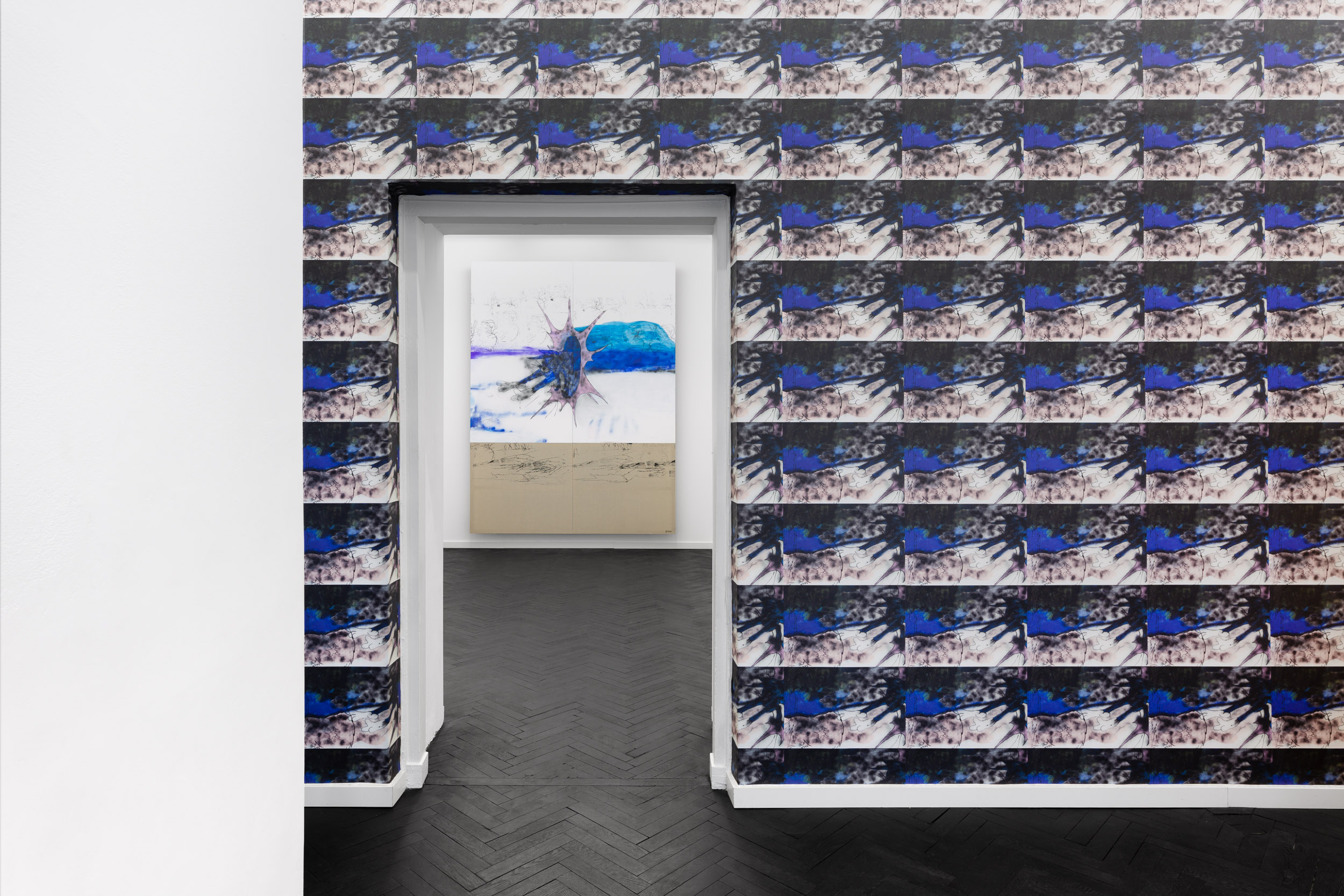
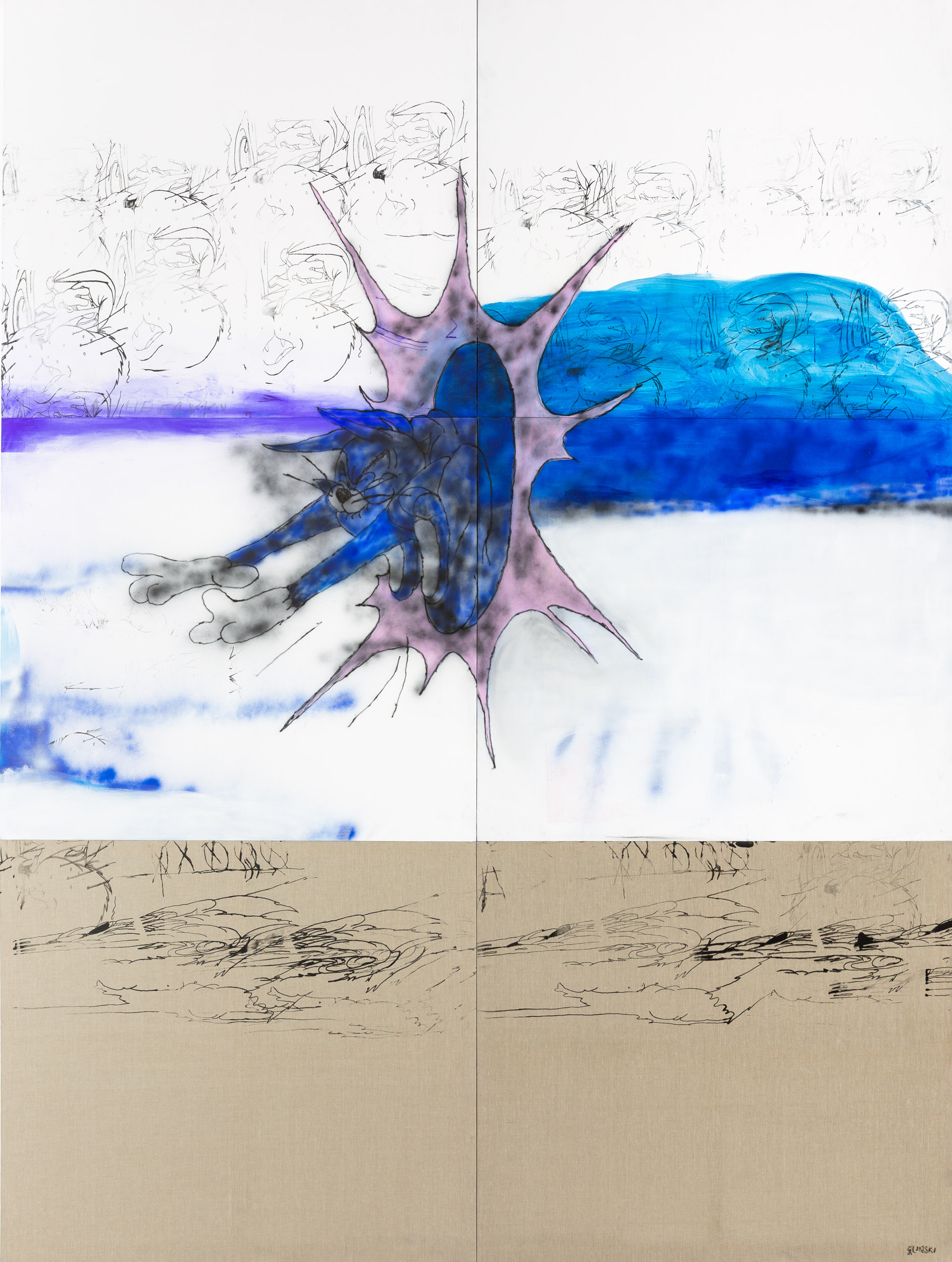
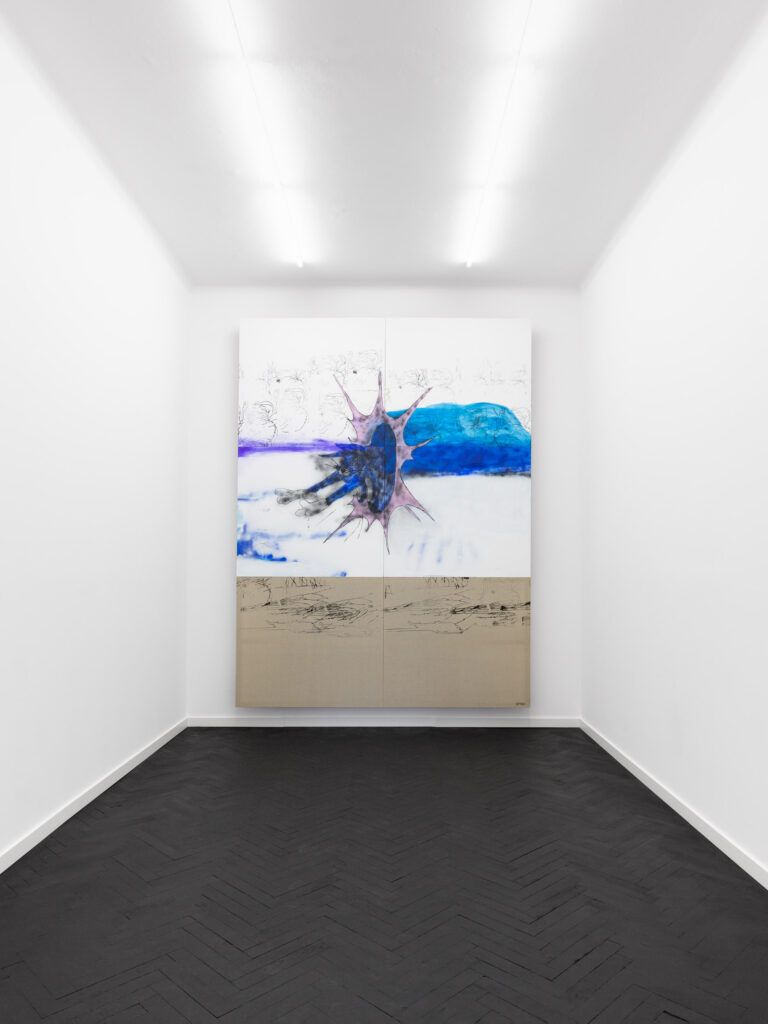
The artist, whose painting is based on successive layering of images, blurring traces, or revealing them only piecemeal, leaves us with another clue. What only seemingly overcomes the horror is the motif of a return to childhood and fairy tales; familiar from Gliński’s previous paintings, but until now, not used in a way that drives the entire story. One has to look closely to recognise the blurred and glitchy faces of characters from Warner Bros, Hanna-Barbera, or Walt Disney cartoons. An anvil falls on Wile E. Coyote as he chases the Road Runner, a bomb explodes in Tom and Jerry’s cabin. The stories that today’s thirty-somethings were raised on are full of inconsequential, unjustified violence. In this regard, not much has changed from the times of the Brothers Grimm, who had Little Red Riding Hood cutting open the Wolf’s guts, to when Sylvester Pussycat, humiliated by Tweety, puts a gun to his temple. Literary scholar Professor Ryszard Koziołek argues that even in this case, culture is meant to arouse aesthetic and moral discomfort within us. ‘Literature performs this experience on us and then makes us wonder what is wrong with us’. However, Gliński seems to be drawing a line here. Are we not victims of a self-fulfilling prophecy? The world is bad, so bad things happen in our stories. Bad things happen in our stories, so the next generation knows that the world is supposed to be bad.
Nijakowski calls our drive for cruelty a ‘birth defect’. A defect that can never be eliminated, just as its cause cannot be investigated. In Gliński’s work, violence is revealed repeatedly, not only on the symbolic level. In his performances, he has repeatedly teetered on the edge of, or at times, clearly crossed the boundaries of his own health and safety. His paintings have a different function; their strength is precisely in the layering and obscuring. We are no longer able to separate real violence from the fantasy of it. We are unable to distinguish whether this desire is imposed on us or whether it lies inherently within.
Aleksander Hudzik
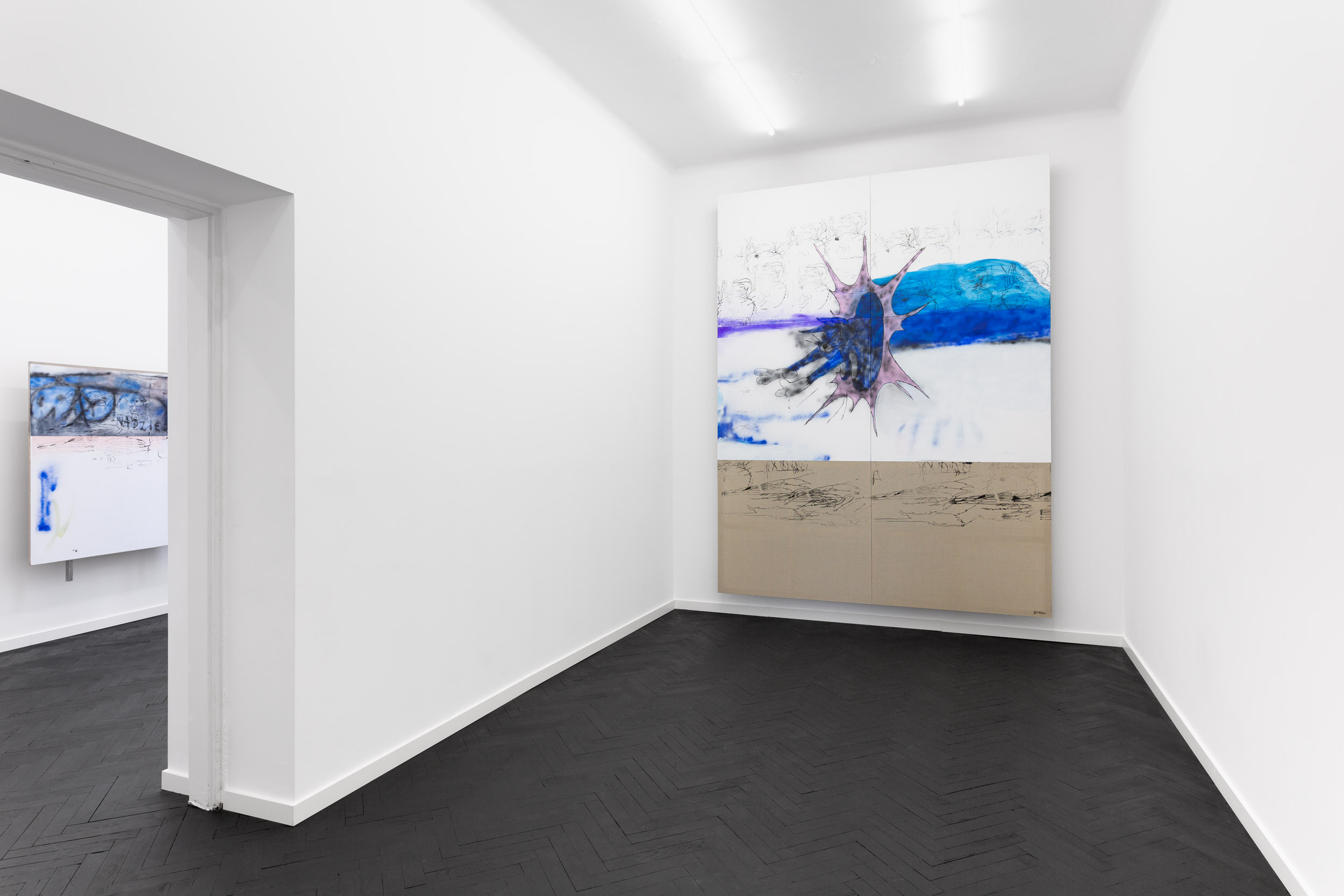
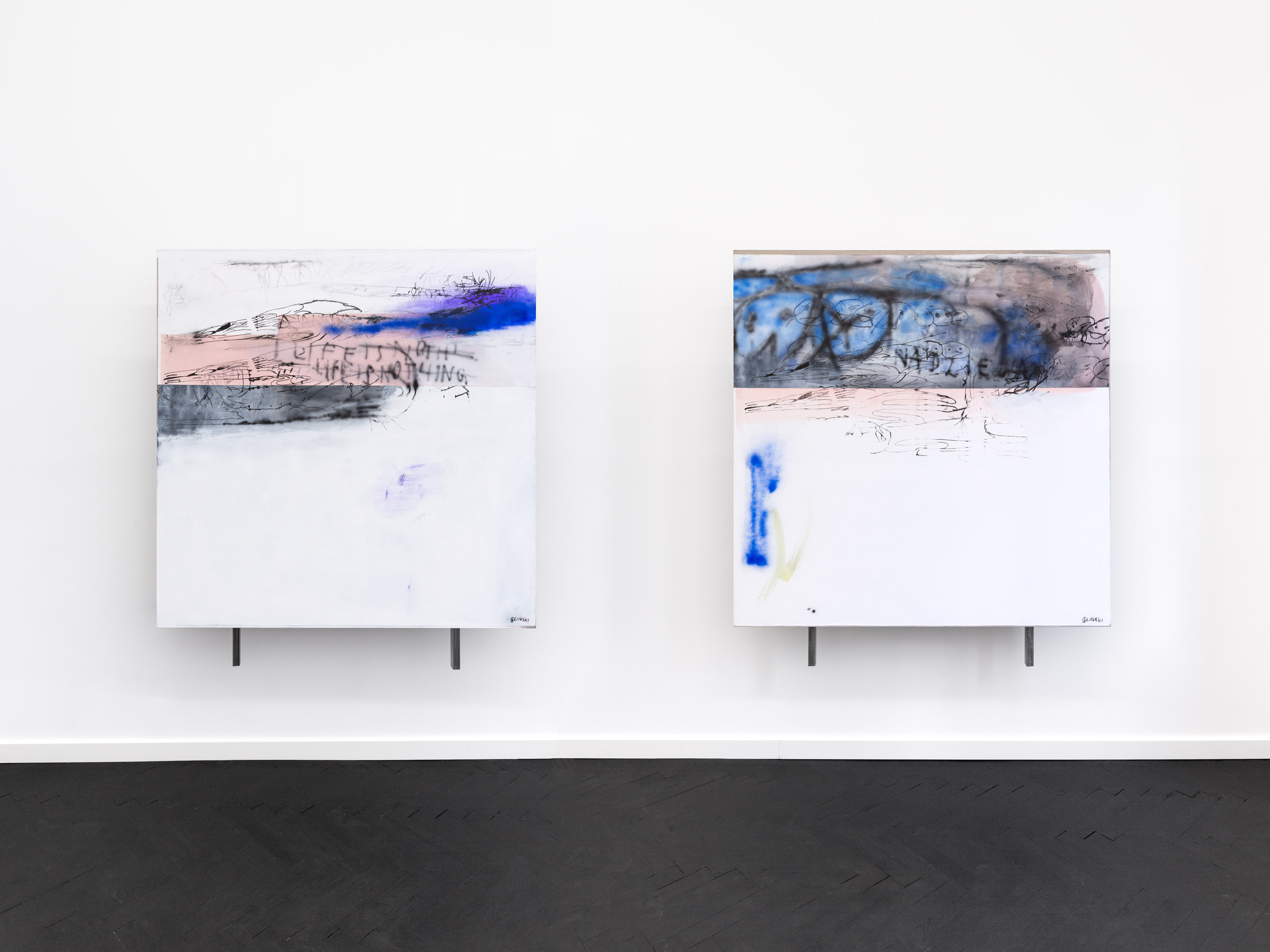




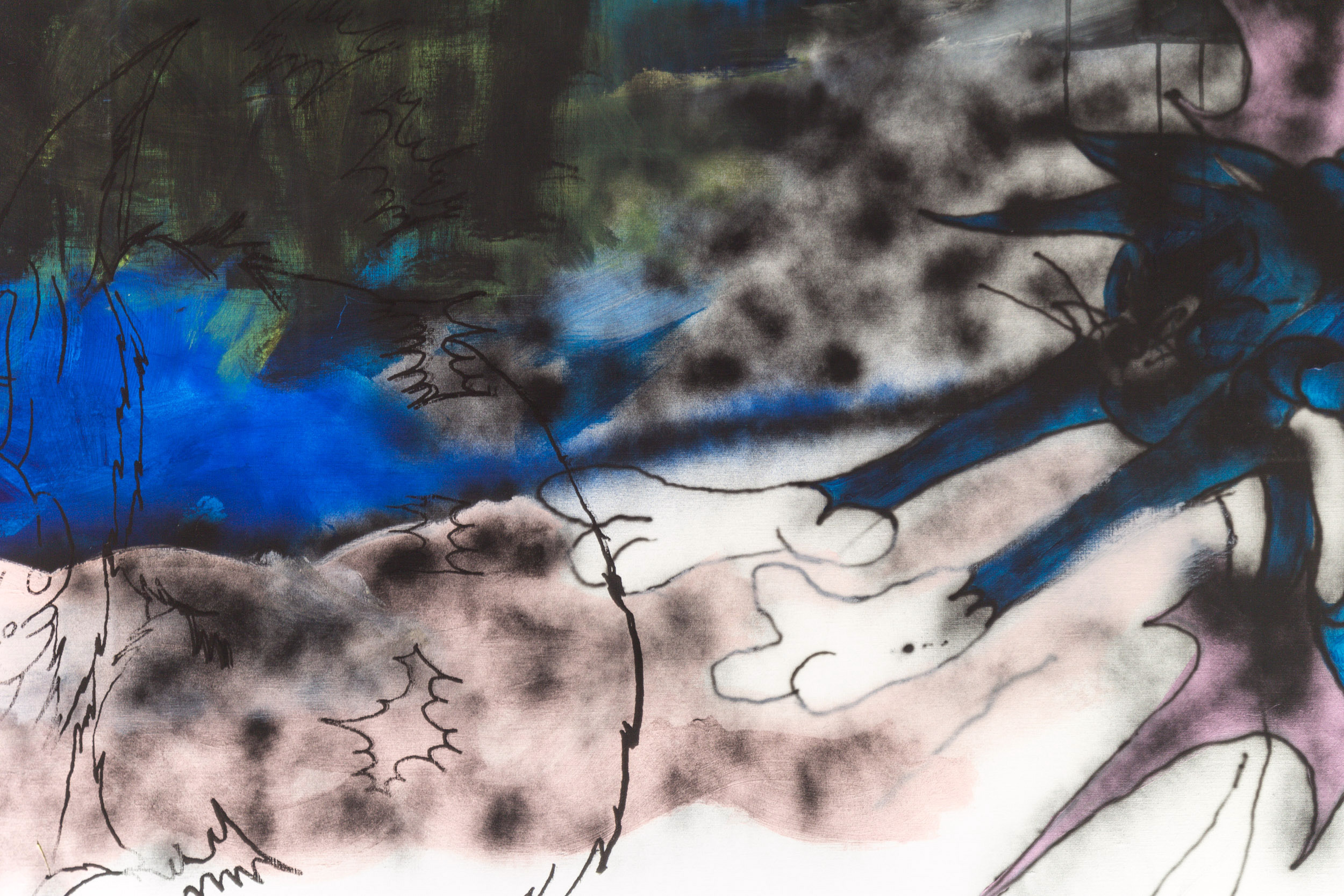
Jakub Gliński
HEAVY DISNEY
Feb 25 – Apr 22, 2023
Opening: Saturday, February 25, 2023
5 – 7:30 pm